1st
MML Power Quantizer
2nd
Tonal Eclipse of the Art: In Silico Polyphonic Exploration with Carbon Nanotubes
3rd
Genesis Nexius
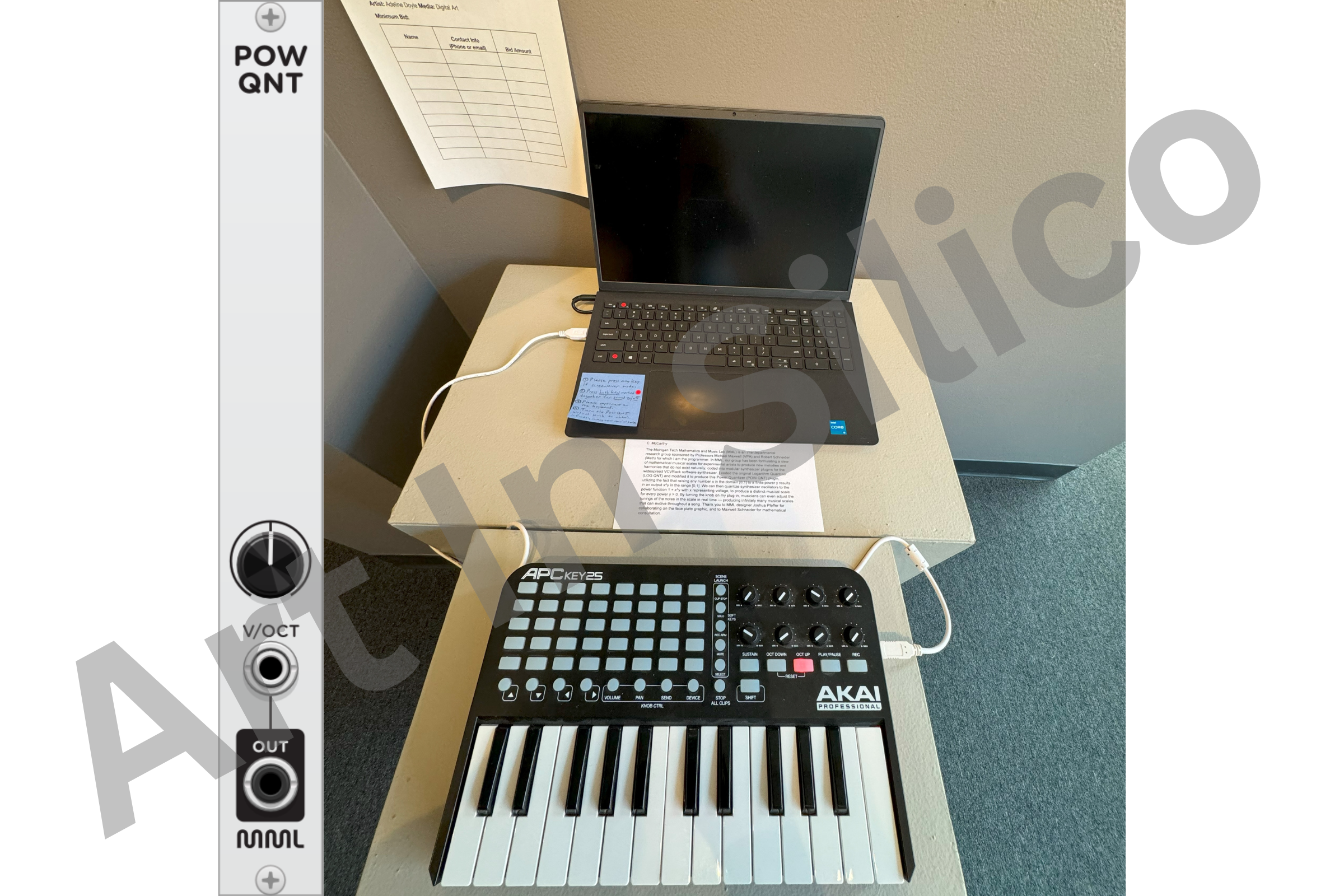
MML Power Quantizer - C. McCarthy
"The Michigan Tech Mathematics and Music Lab (MML) is an interdepartmental research group sponsored by Professors Michael Maxwell (VPA) and Robert Schneider (Math) for which I am the programmer. In MML, our group has been formulating a slew of mathematical musical scales for experimental artists to produce new melodies and harmonies that do not exist naturally, coded into modular synthesizer plugins for the widespread VCVRack software synthesizer. I coded the original Logarithm Quantizer (LOG QNT) and modified it to produce this Power Quantizer (POW QNT) plugin, utilizing the fact that raising any number x in the domain [0,1] to a finite power y results in an output x^y in the range [0,1]. We can then quantize synthesizer oscillators to the power function 1 + x^y with x representing voltage, to produce a distinct musical scale for every power y > 0. By turning the knob on my plug-in, musicians can even adjust the tunings of the notes in the scale in real time — producing infinitely many musical scales that can evolve throughout a song. Thank you to MML designer Joshua Pfeffer for collaborating on the face plate graphic, and to Maxwell Schneider for mathematical consultation."

Tonal Eclipse of the Art: In Silico Polyphonic Exploration of Carbon Nanotubes - Steven Senczyszyn and Kathryn Summersett
"Audio exploration of overtone singing synthesized with carbon nanotube speakers."
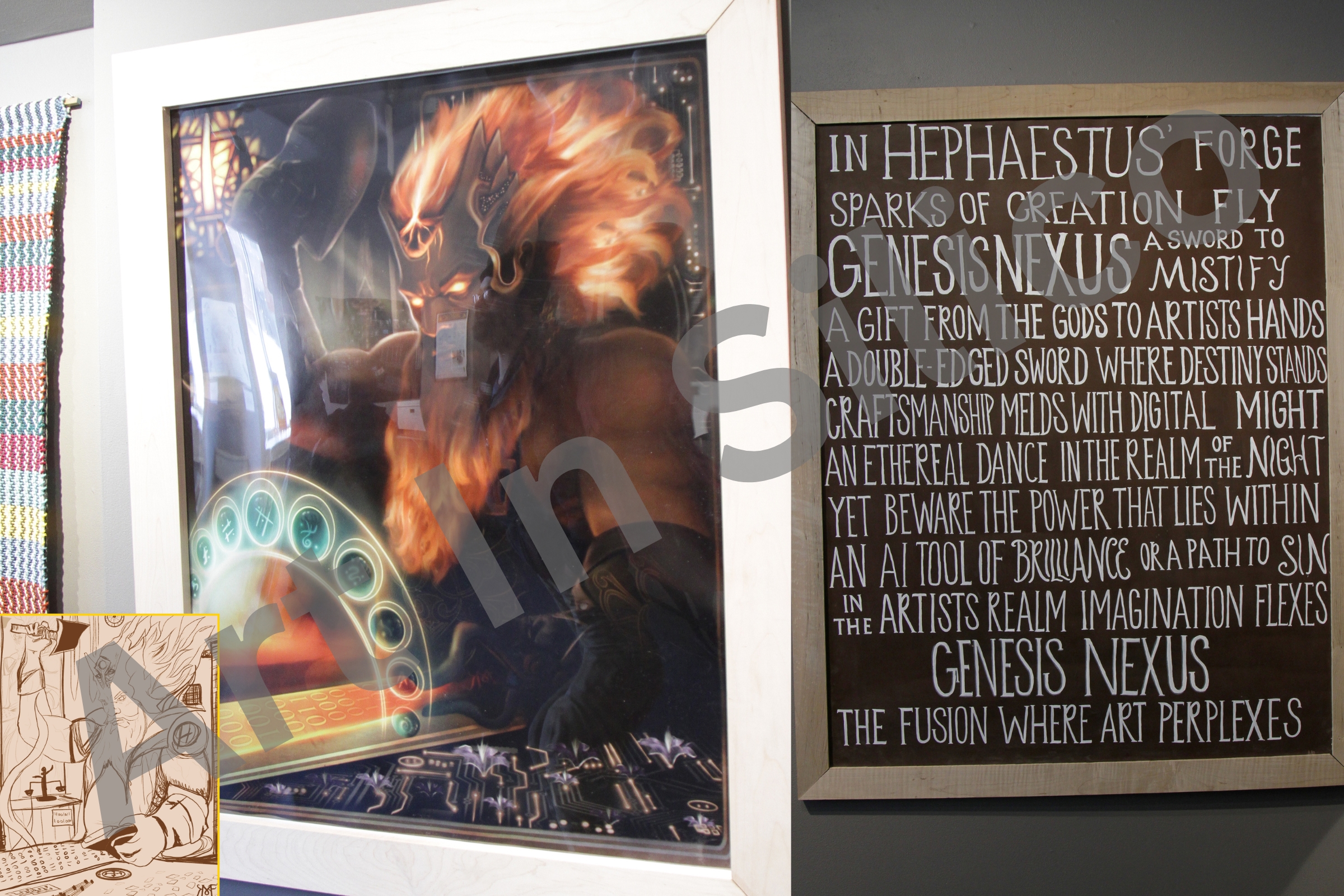
Genesis Nexus - Meg Raasakka and Mary Kozmor
"In the divine forge of Hephaestus, the god of blacksmithing, the birth of artificial intelligence takes shape as the Genesis Nexus...an otherworldly sword bestowed upon artists. This celestial gift embodies the double-edged nature of AI, symbolizing both creative empowerment and the potential for misuse. Much like a mythic artifact, the Genesis Nexus represents the merging of ancient craftsmanship with the digital age, where the power to create and destroy resides in the hands of its wielder. It's a reminder that, like all powerful tools, AI carries the weight of responsibility, its potential for both artistic brilliance and unintended consequences dependent upon the virtuous choices of those who dare to harness its potential. Process: In crafting this piece, I began by capturing a photo reference of my partner Kevin wielding a hatchet, which I then inputted into Wombo software along with descriptive text. This AI-enhanced image served as a reference during the brainstorming and sketching phases of my creative process. After completing the sketch/linework, I started digitally painting the piece in Procreate using my own custom brushes, investing around 20 hours of work into it so far. As Genesis Nexus takes shape, I'm excited to see my vision transform into a powerful weapon of artistic expression.
Poem: (The second painting done by Meg Raasakka)
In Hephaestus' forge, sparks of creation fly, Genesis Nexus, a sword to mystify.
A gift from the gods to artists' hands, A double-edged sword, where destiny stands.
Craftsmanship melds with digital might, An ethereal dance in the realm of the night.
Yet, beware the power that lies within, An AI tool of brilliance or a path to sin.
In the artist's realm, where imagination flexes, Genesis Nexus, the fusion where art perplexes."
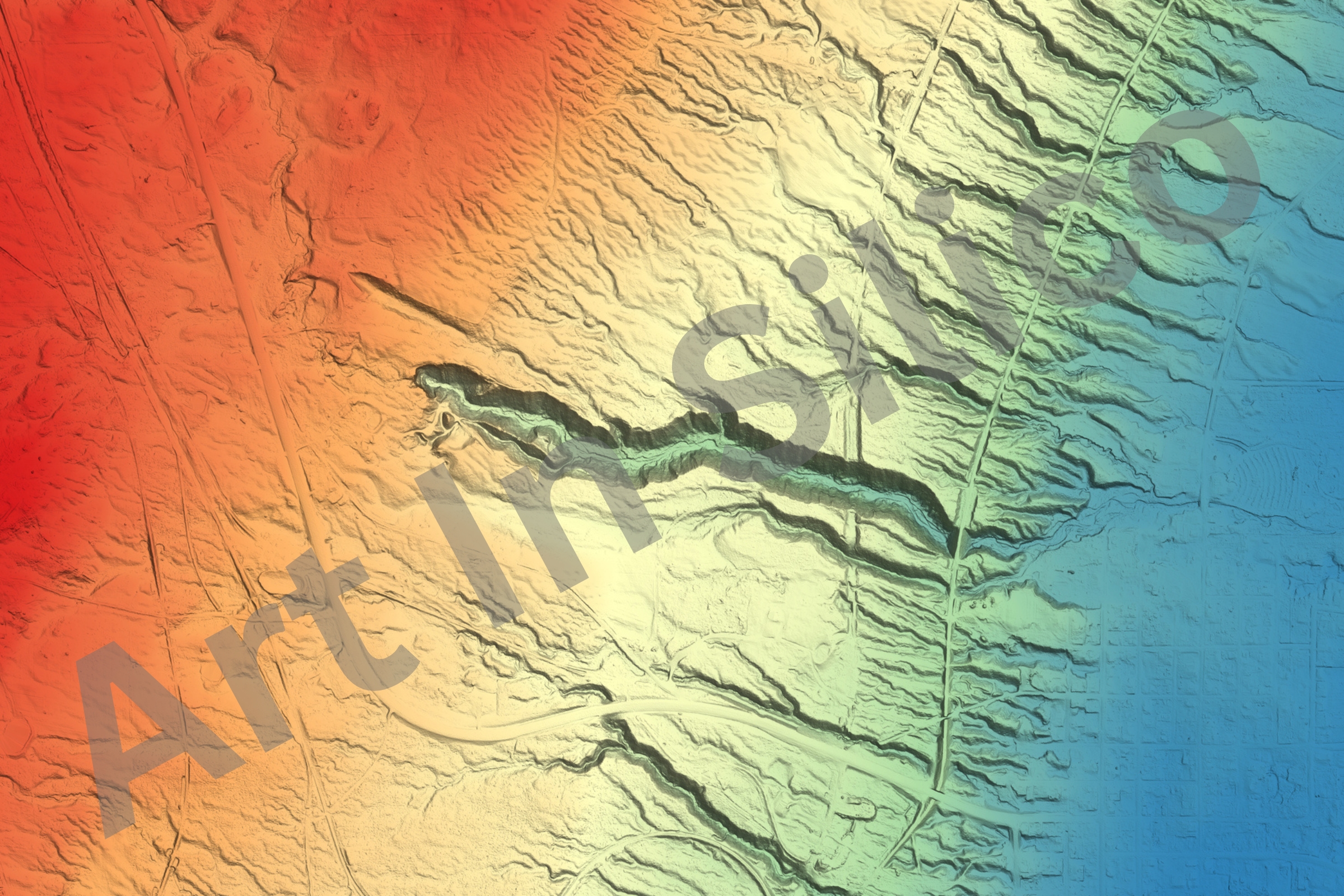
Downhill - Alex Hirzel
"Metal print of color-coded print of elevation data. 1" thickness stood off of wall."
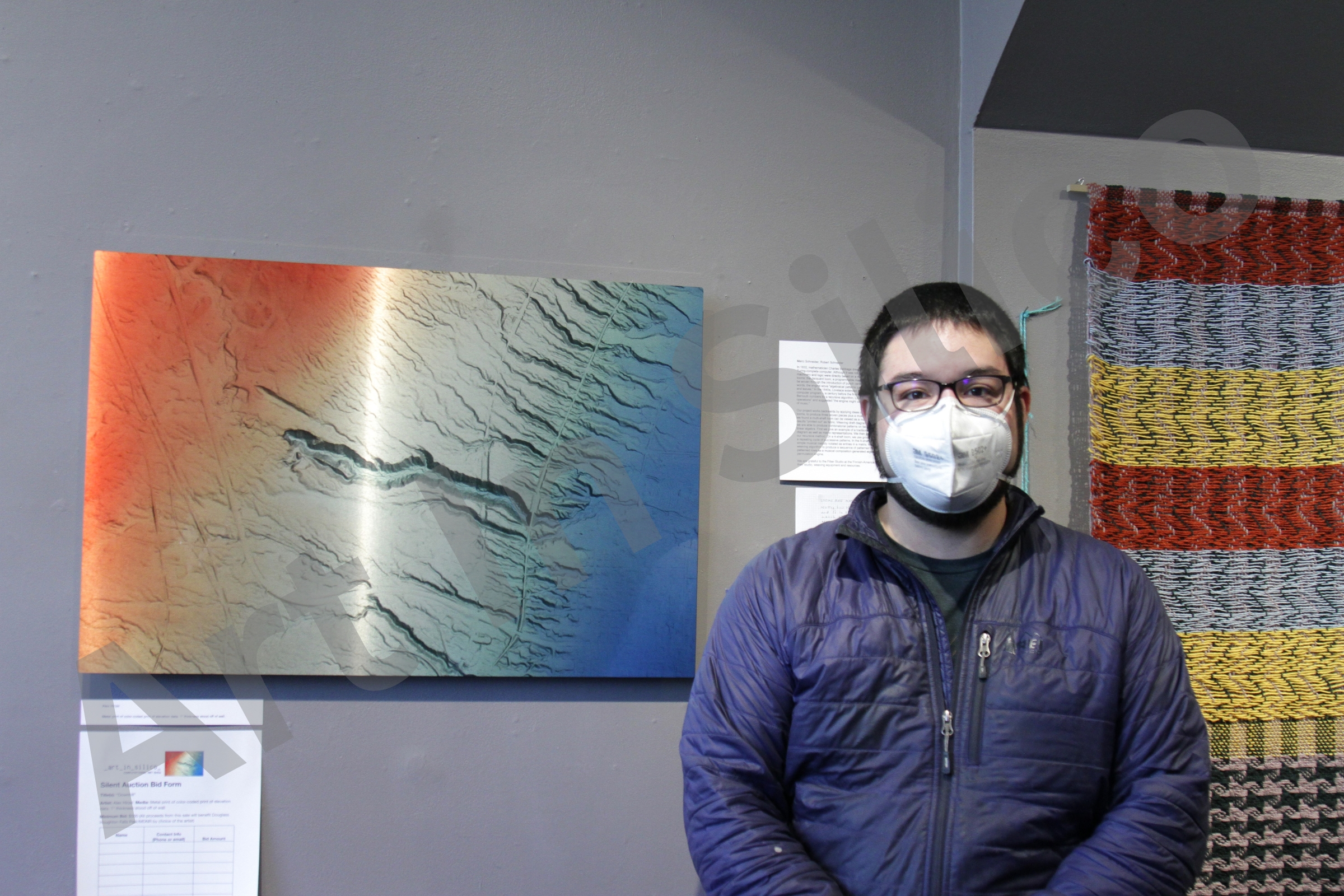
Michigan Tech Monuments in Pointclouds - Ian Mattson
"As a robotics researcher in Michigan Tech's Robust Autonomous Systems Lab, I use sophisticated sensors to perceive and localize robots in their environments. A technique called SLAM, an acronym for Simautaneous Localization And Mapping, uses a LiDAR sensor to create a 3D map of the robot's surroundings. LiDAR sensors emit infrared lasers into the environment that collide with objects. The time it takes for each laser pulse to travel and return is used to determine a highly accurate (usually around a few centimeters) distance estimation. Utilizing a SLAM package called LeGO-LOAM (lightweight and ground optimized lidar odometry and mapping) and a Robosense RS-Ruby LiDAR sensor, I've been able to drive an unmanned ground vehicle around various campus locations to scan monuments and buildings into a SLAM map. The results are every bit as useful for localization as they are stunningly beautiful. In my presentation of two images, one contains the iconic Michigan Tech Husky Statue, with the brand-new H-STEM building lying just behind. The other image is an aerial perspective of the clocktower, looking towards the Academic Office Building."
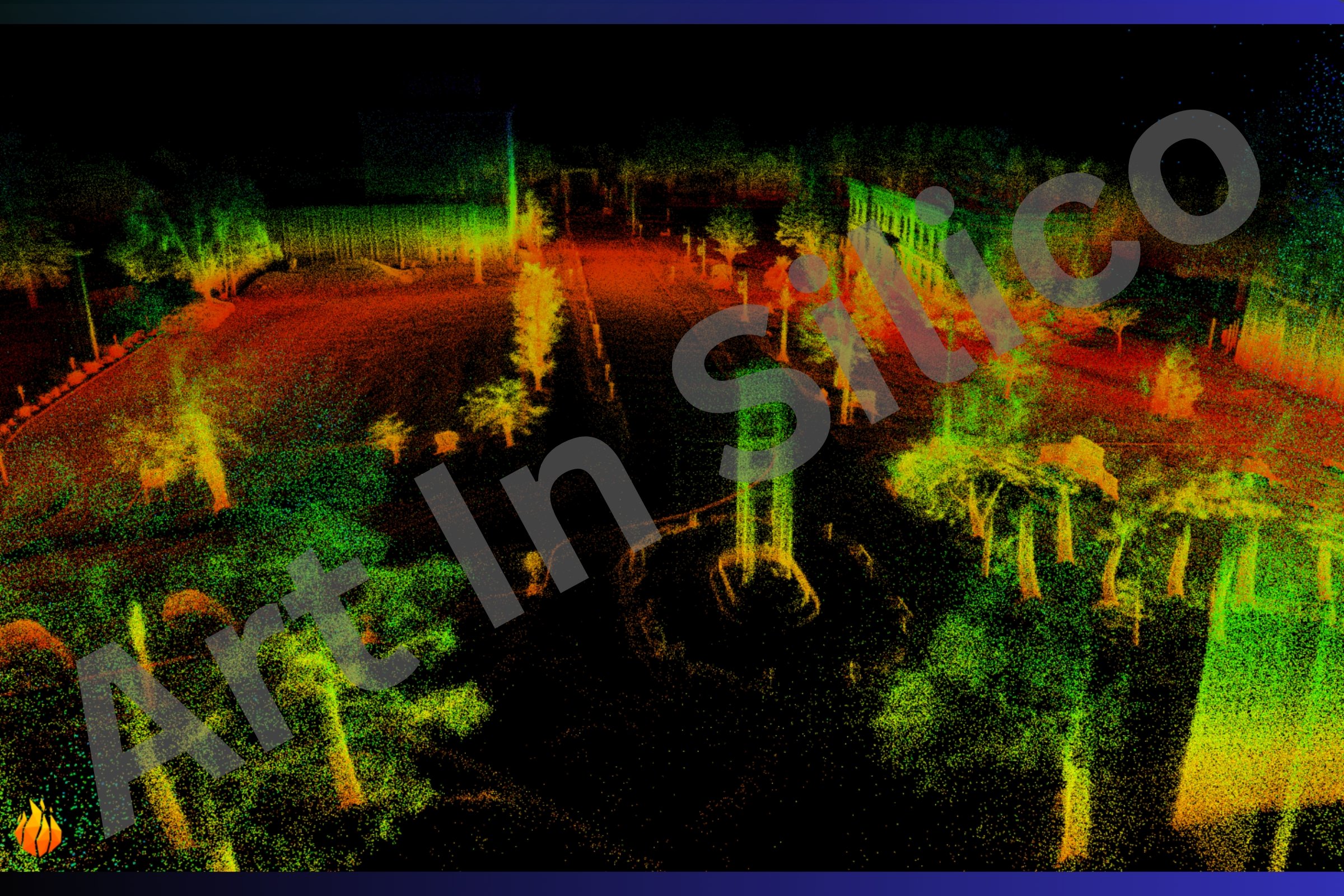
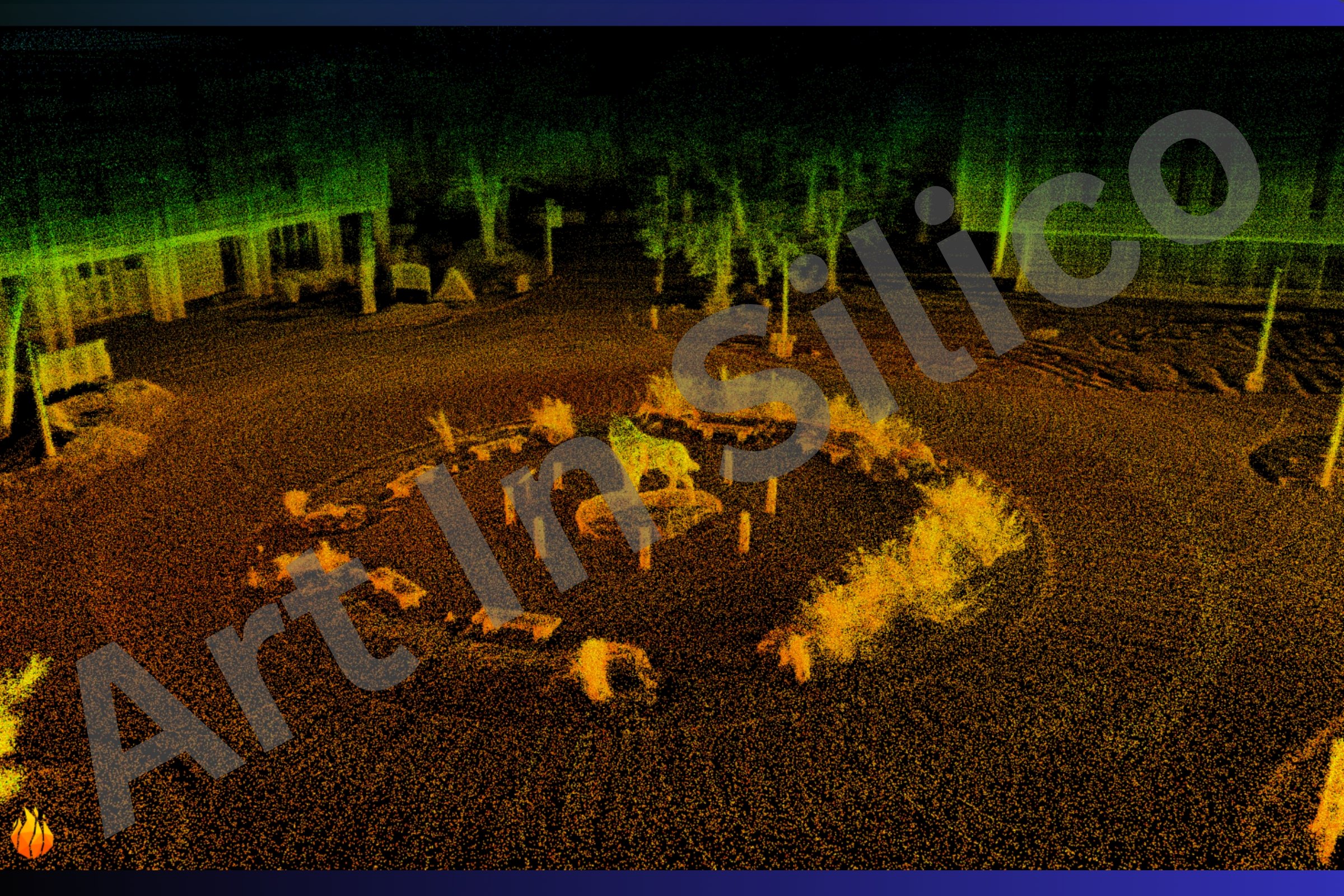

Circuit Map of Campus - Adeline Doyle
"A campus map of Michigan Tech made in the style or circuit boards. Important components are buildings/objects, and circuits are paths and roads."
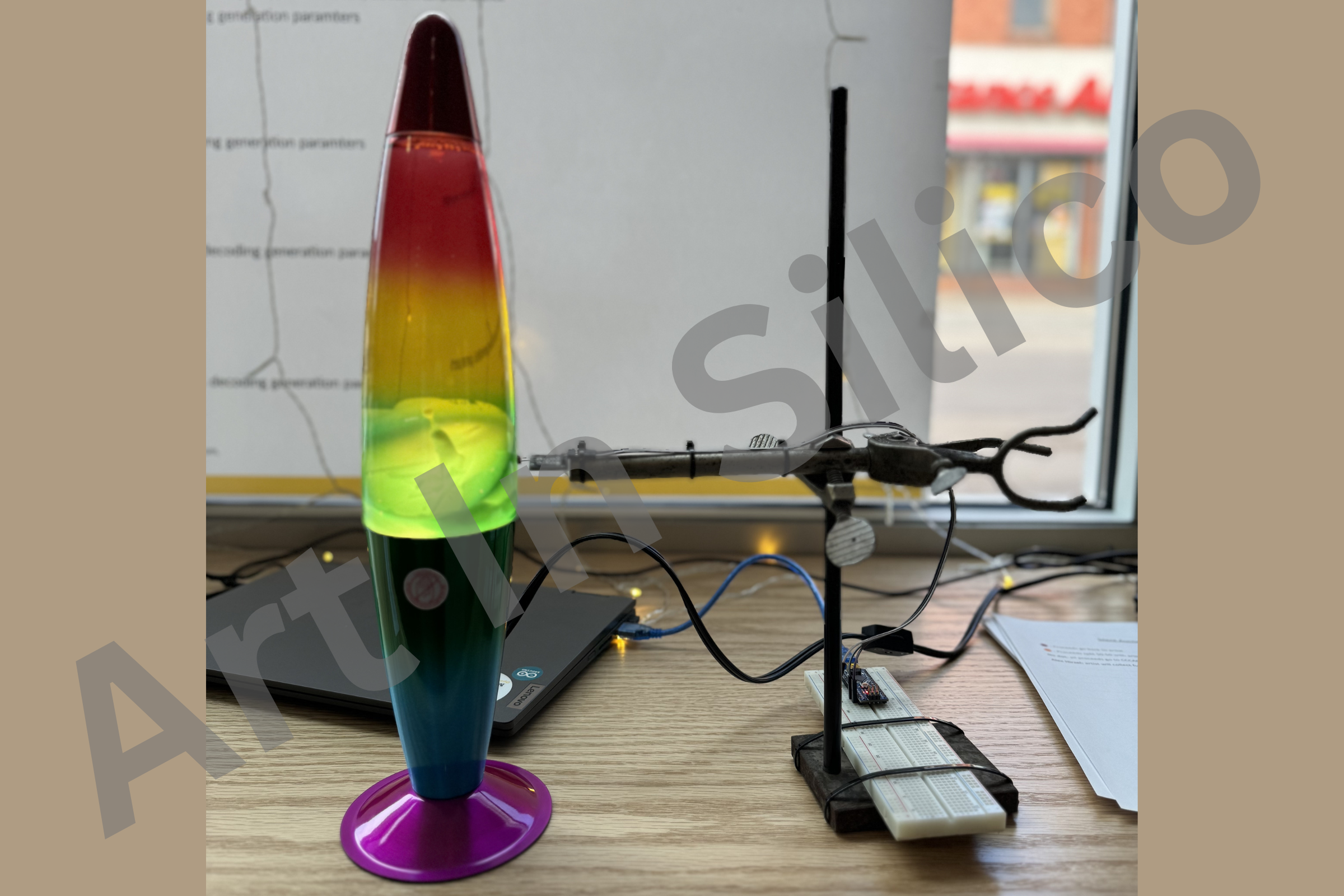
Audible Lava - Shane Oberloier
"This Lava Lamp uses a basic photo-resistor to capture changes in light as the lava flows. Those changes in light triggers a midi-generation circuit which creates music that correlates with what's happening in the lamp."
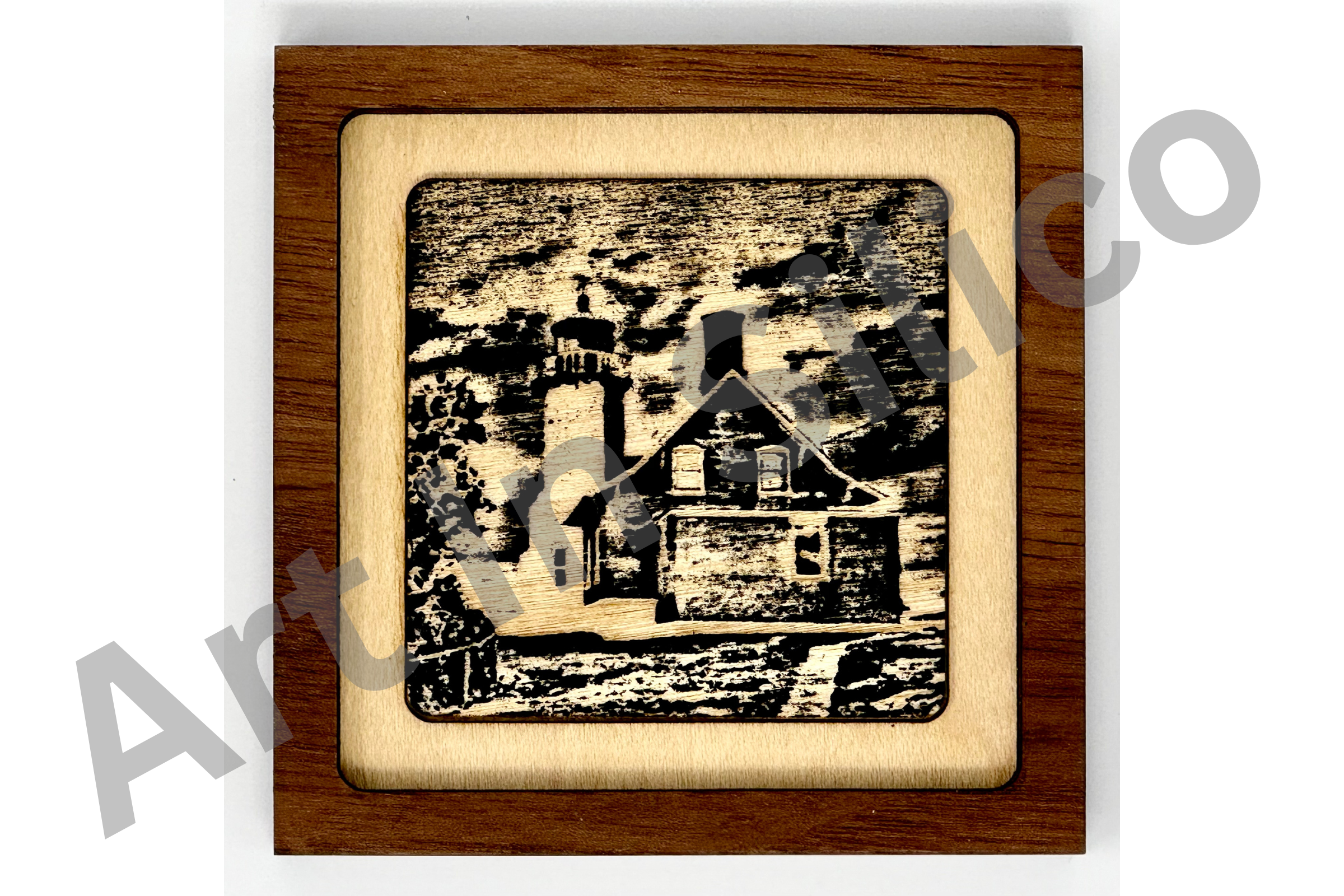
Eagle Harbor Lighthouse - Kirstin Hensley
"This inked woodcut block was produced by manipulating a digital photo I took of the Eagle Harbor lighthouse, laser engraving the design on birch plywood, and using it to print images on paper and fabric. New to printing, I neglected to mirror the image and all of the prints were backwards, but the block itself is in the correct orientation. The frame was also designed using software and created with a laser."
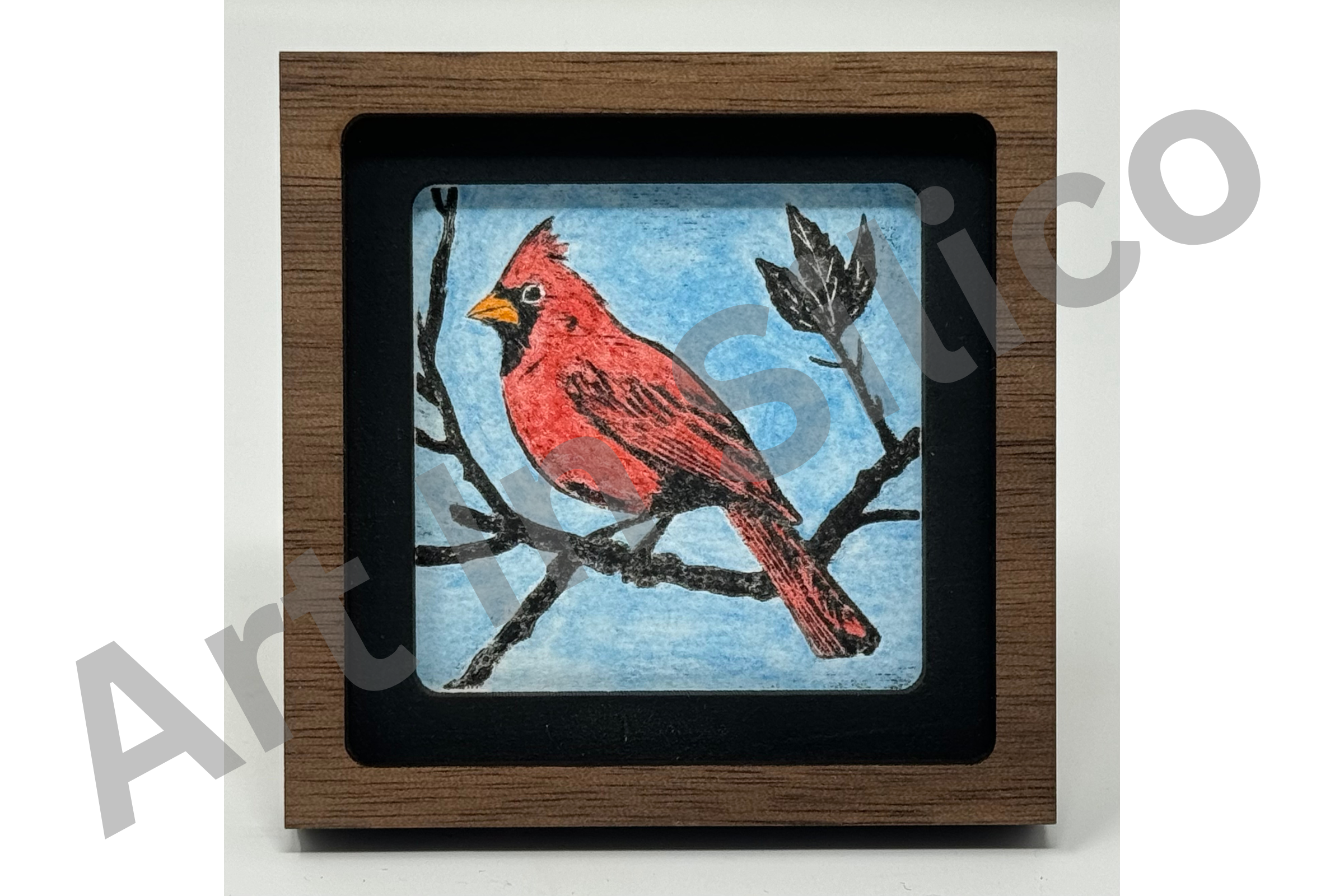
Cardinal Woodcut Print - Kirstin Hensley
"During the AI Art workshop, I used MidJourney to create an image of a 'cardinal woodcut print'. Using design software, I modified the image for laser engraving and engraved it onto a piece of wood. I then used a 3D printed printing press (Open Press Project design https://openpressproject.com/) to print the design onto paper and then colored the print with watercolors. This project has been an effort to sort out my thoughts on AI art. When seen next to my other submission, which was created with a digital photograph, it makes me wonder if this is any less "art" than starting with a photo. When taking that photo, my camera's software made choices about how to make the best image, and then I took it through several other programs to alter the image for laser engraving. The same process was done for the AI generated cardinal image. Both were a similar amount of work, but I feel more connected to the lighthouse one."

Level - Phyllis Fredendall and Phillip Faulkner
"The graphic was designed by Phillip Faulkner and designed in a weave structure by Phyllis Fredendall using EAT software. It was woven on a jacquard loom by Victor Corp. now Duvaltex in Quebec."
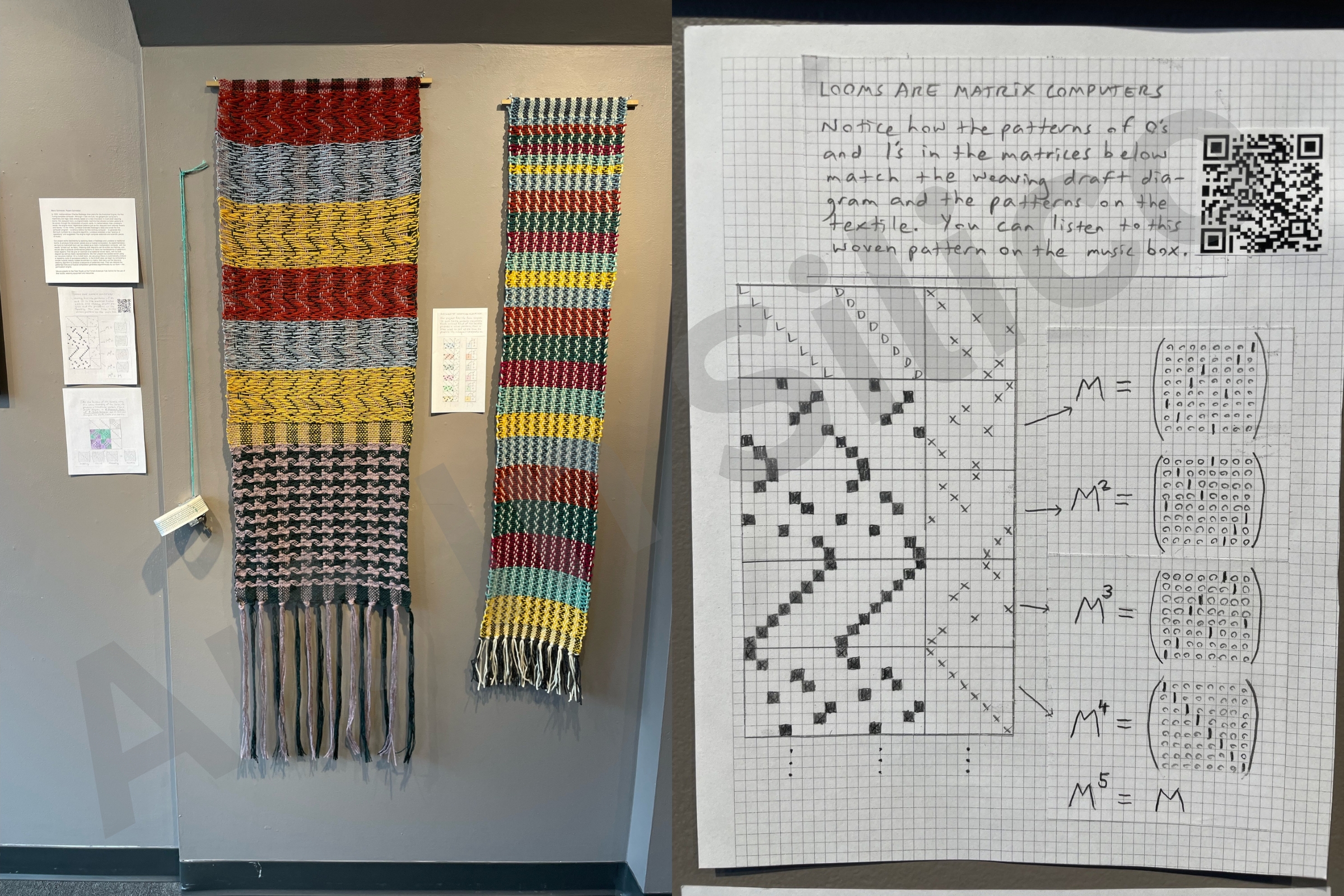
Permutation Engine - Marci and Robert Schneider
"In 1832, mathematician Charles Babbage drew plans for the Analytical Engine, the first Turing-complete computer. Although it was not built, the gargantuan computer's machinery and logic were directly based on a new innovation in multi-shaft looms: the Jacquard loom, a programmable machine that allowed complex patterns to be woven through the introduction of punch cards. In mathematician Ada Lovelace's words, the engine wove "algebraical patterns just as the Jacquard loom weaves flowers and leaves." In the 1840s, Lovelace extended Babbage's ideas and wrote the first computer program -- a century before the first working computer -- to generate the Bernoulli numbers by a recursive algorithm. Lovelace predicted a new "science of operations" and suggested 'the engine might compose elaborate and scientific pieces of music.' Our project works backwards by applying ideas of Babbage and Lovelace to traditional looms, to produce three woven pieces plus a musical composition. By experimentation, we found a multi-shaft loom can be viewed as a matrix multiplication computer, with the results "printed out" as fabric. Weaving draft diagrams can be written as matrices, and we are able to produce combinatorial patterns on fabric as manifestations of patterns in linear algebra. First we give an example of a traditional woven fabric, with its draft diagram as well as matrix representations. We then present two textiles woven using our recursive method. On a 4-shaft loom, we use group theory to automatically produce a repeating cycle of successive patterns. In the 8-shaft case, we begin with a simple melody notated as entries in a matrix, then carry out the recursive weaving algorithm to produce a sequence of patterned rows. Then we interpret the patterned rows as a musical composition generated algorithmically by our loom -- the permutation engine."
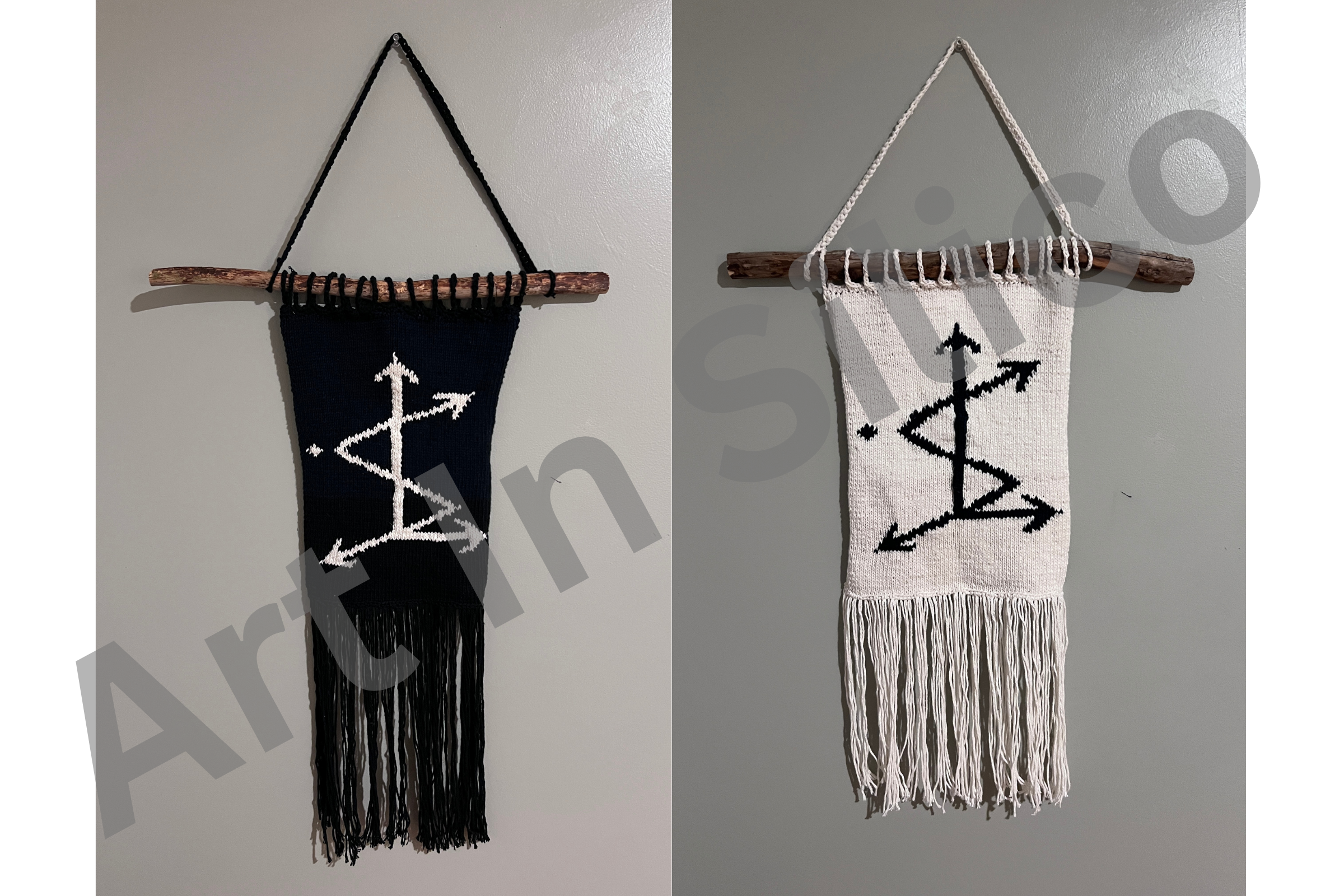
Boho Ellis Light, Boho Ellis Dark - Terri Frew
"The Ellis Sigil was created in the early 2000's by a group of Chaos Mages in their project Assault on Reality. It is a symbol that functions like a link but also as a portal; the goal being to synchronize and concentrate magickal thought as well as linking magickal practitioners. My project, Boho Ellis, features the Ellis Sigil as a hand knit panel displayed in a familiar way. In crafting the sigil, I concentrated my intention, seeding every stitch with the ability to link with others of its kind. Much like the World Wide Web, these newest iterations of the sigil are like an additional link in the chain; another website that is uploaded. The aesthetic of Boho Ellis references mid-century macramé wall hangings. Although Ellis is a more contemporary entity, the roots of the theory behind its creation come to us by way of the 1960's."
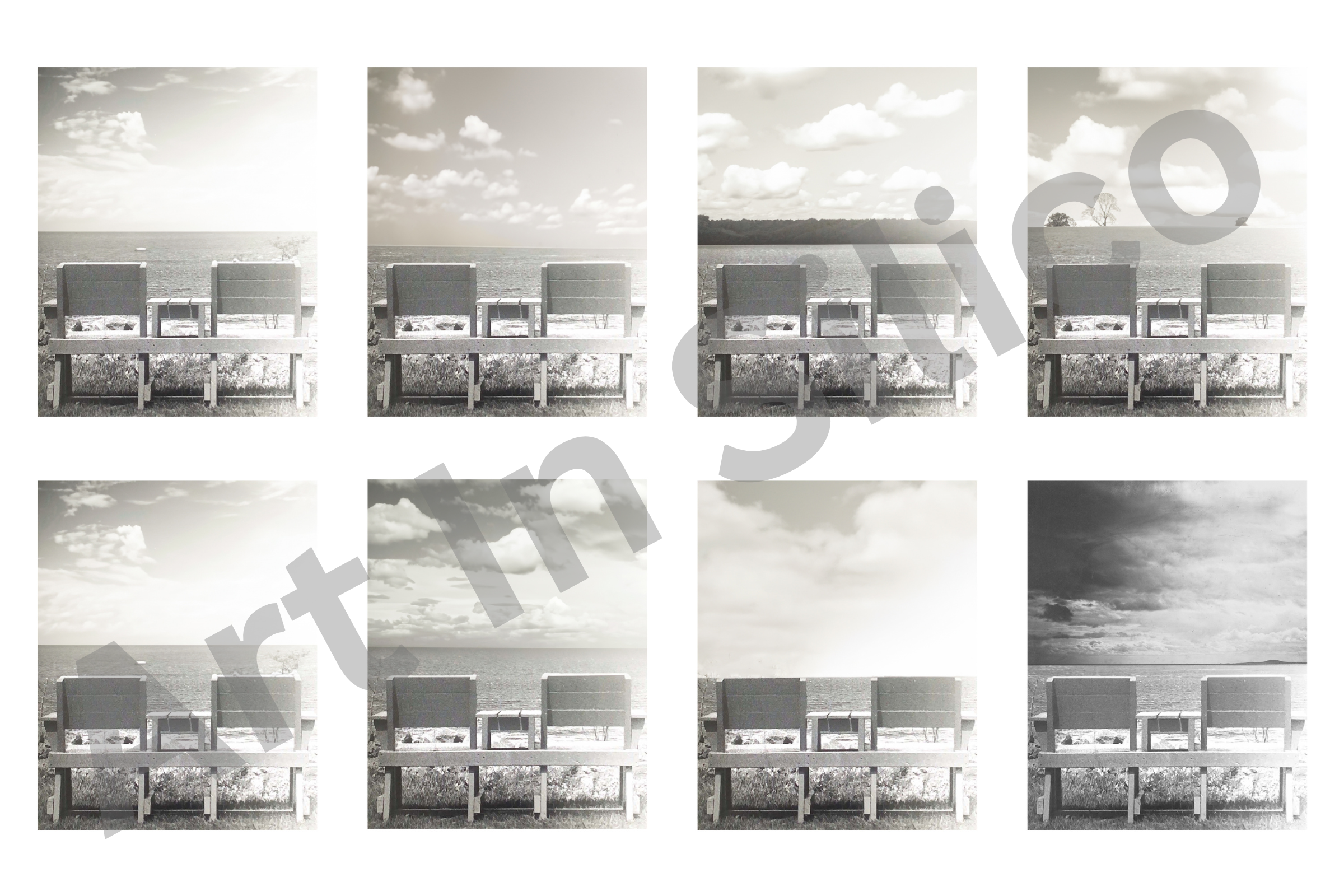
McLain Cloudy Views - Stefka Hristova
"Gustave Le Gray, a French photographer working in the 1850s, became famous for reusing a set of "clouds" in many of his landscape images. This repetition was driven party because of the limitations of the camera equipment where proper exposure of the foreground and the sky was often difficult. For this project, I explore the generative power of AI as well as photographic repetition in historical context inserting both Le Gray's "Cloudy Sky, Mediterranean Sea (1857)" (bottom right) as well as AI generated clouds at a open sky vista taken at McLain State Park. The original McLain image was shot on analog film, printed on photo paper and then digitized. The digitized version became home of different cloudy dreams. Adding clouds here was a task executed through AI yet similar manipulation has been practiced since the emergence of photography."
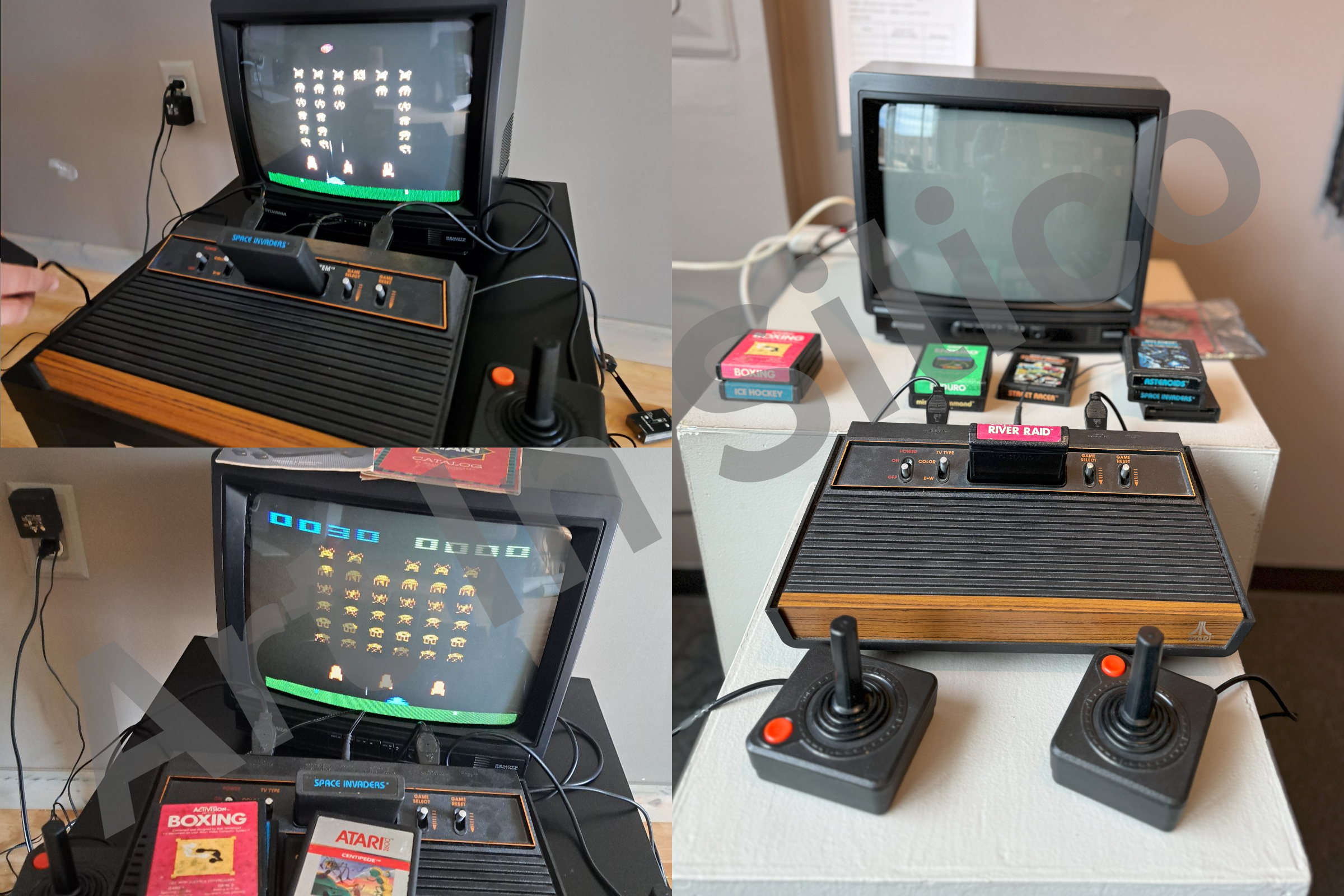
1980 Atari Video Game System - Nathir Rawashdeh
"The Atari 2600 from 1980 is the first widely successful home video game console. It game rise to gaming arcades in the 80's and 90's and the gaming industry as a whole. The "Atari Video Computer System" is a two player cartridge based console. The graphics were basic, but the gameplay makes up for that. The games cartridges gave the programmers only 4 Kilo Bytes of memory to work with. The Atari 2600 contained an 8-bit microprocessor running at 1.19 MHz. The average size of a video game in 2024 is around 100 Giga Bytes. That means, a game today uses about 25 million times as much memory as one in 1980."
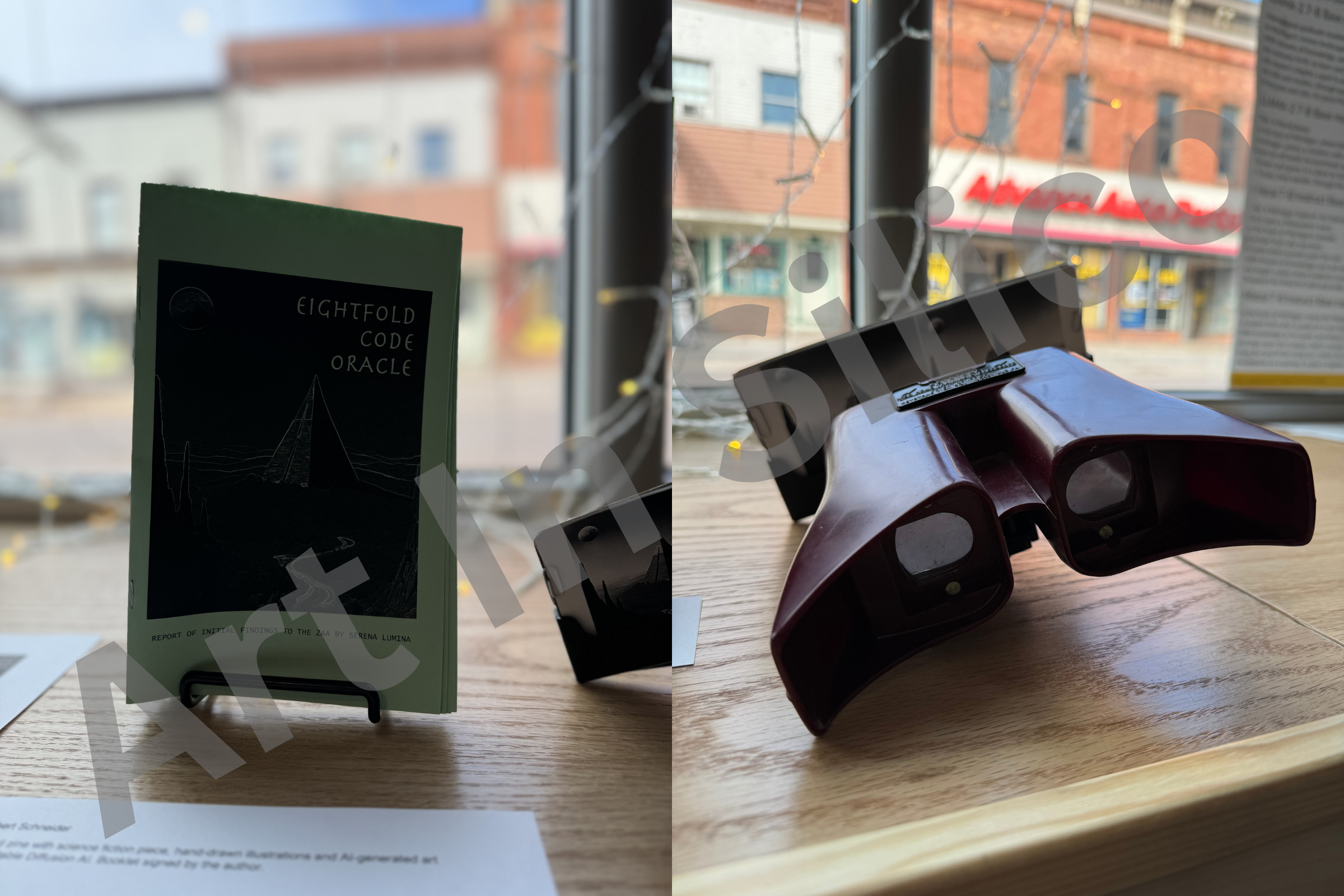
Eightfold Code Oracle: Report of Initial Findings to the ZAA by Serena Lumina - Robert Schneider
"Printed zine with science fiction piece, hand-drawn illustrations and AI-generated art using Stable Diffusion AI. Booklet signed by the author." Robert also included an AI-generated stereoscope slide to accompany the printed zine.
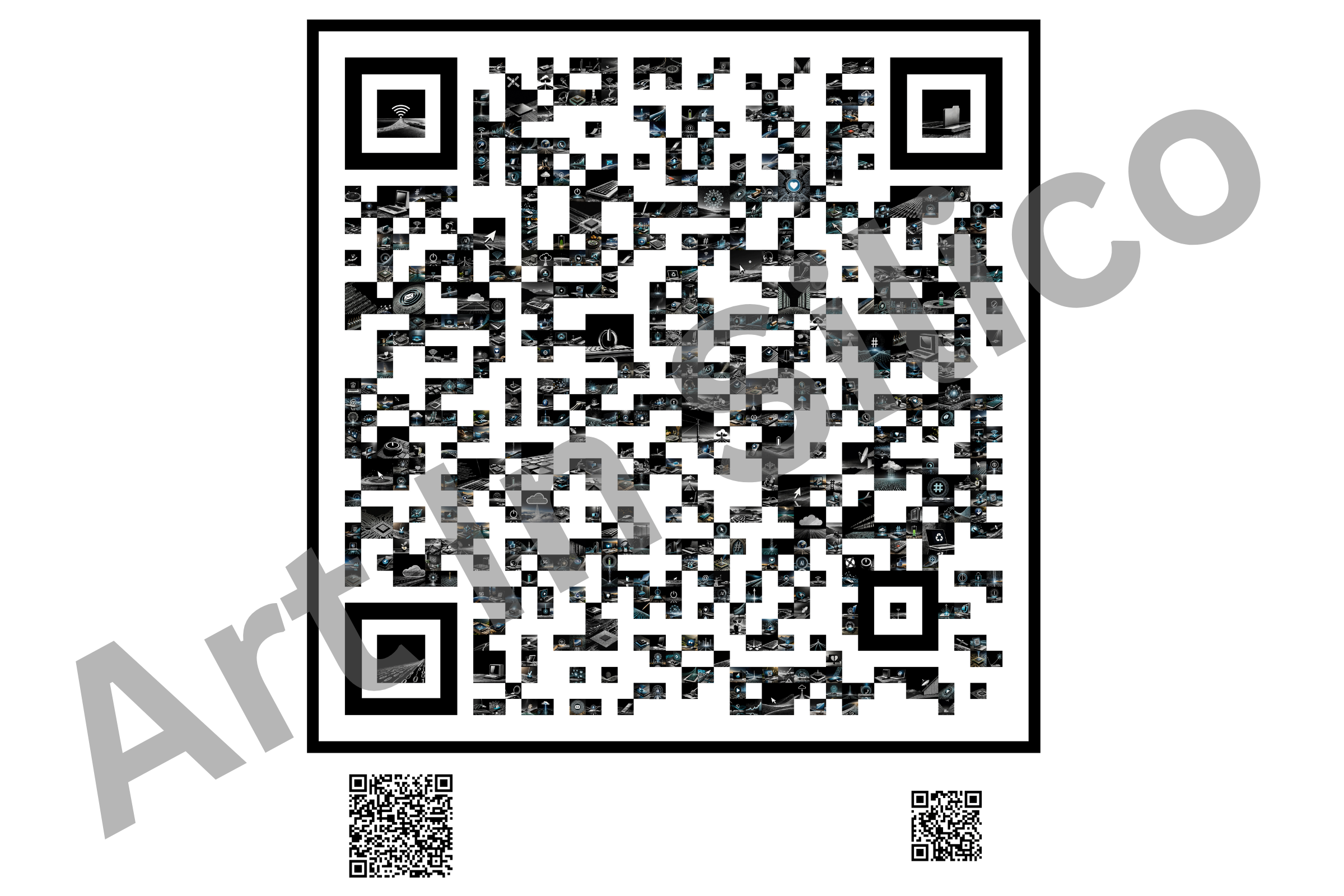
Visible Invisible - Ian Raymond
"Communicating in symbols creates shortcuts in language. Symbols save time and cross the language barrier. Once learned, and later recognized they yield instant meaning. The digital world is full of symbols that make it an effective and powerful communication tool - for humans and machines alike. 583 A.I. generated images were created using Adobe’s Firefly text to image. The generated images replaced the array of a QR code. Each prompt included words requesting symbols used and recognized by humans. The larger QR contains a message when captured."

Life With Computers - Charlotte
"As someone who is studying English at a Tech school, drawing in honor of computational modes is not as natural to me. For "Life With Computers" I set out to draw the electronic and technological things that are with us everyday. This piece shows how intertwined with computers everyday life is even at unawares."
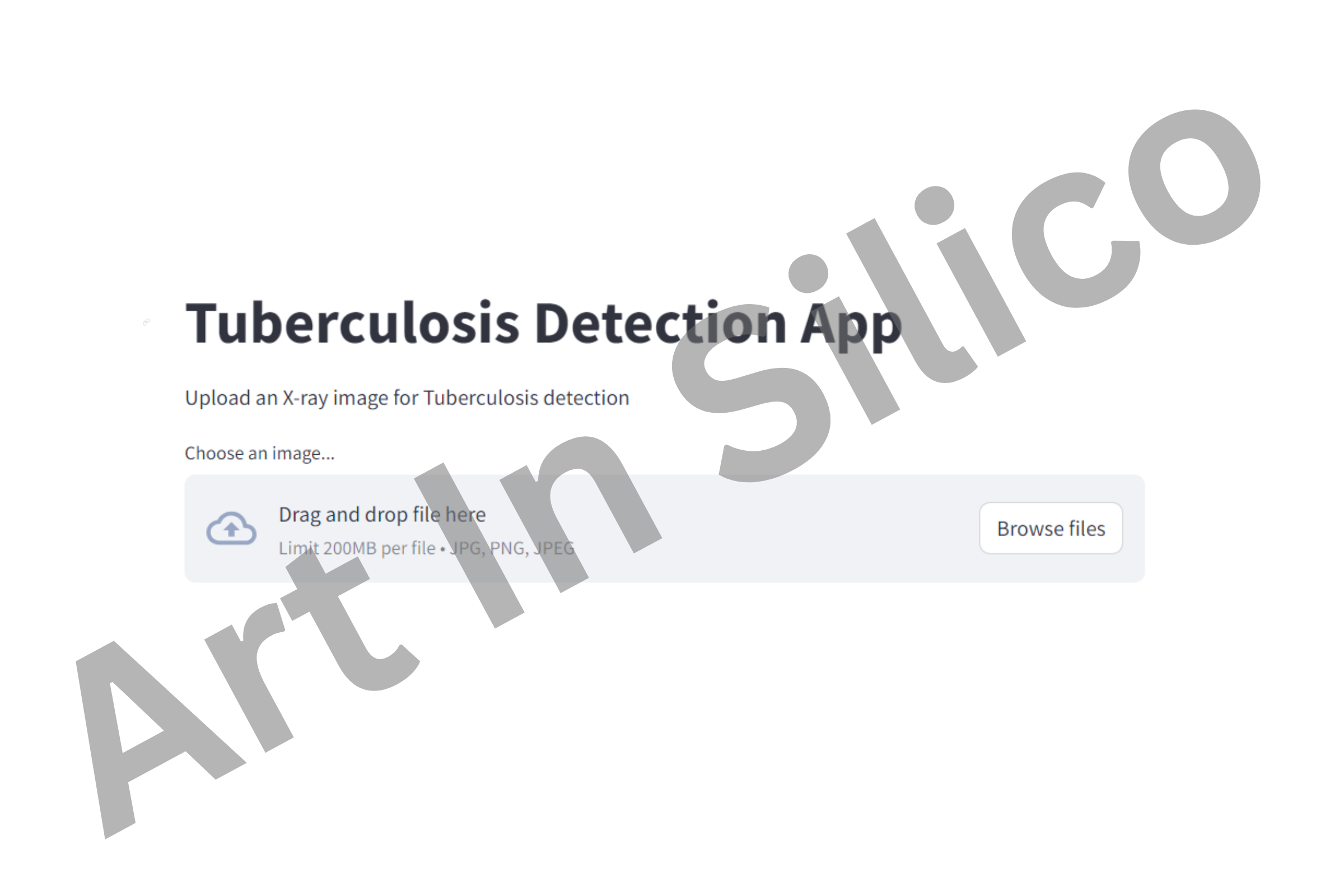
Tuberculosis Detection App - Yogendra Kanchapu
"Deep learning for Machine learning Modeling and Streamlit to deploy the app."
Poetry LLM - Tagore Kosireddy
"It's about showing how LLM's generate text using various decoding parameters. I generated poems to show this example and the code is available in GitHub."
